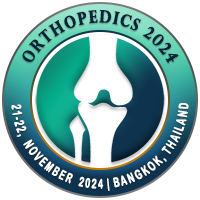
Sean Gerlach
Wellington and Hutt Valley Hospitals, New ZealandTitle: Distal Radius Malrotation as Assessed by CT and Correlation to Common Radiographic Features
Abstract
Background: Malrotation from distal radius fractures can lead to
distal radioulnar joint (DRUJ) instability and block to
forearm rotation. Rotational deformity is difficult to
assess on standard radiograph. Subsequent rotational
malunion can result in significant functional
limitations. This study aims to quantify rotational
deformity on CT in distal radial fractures and identify
correlations with common radiograph parameters.
Methods
We performed a retrospective review of 42 adult
patients presenting to Wellington Hospital between
February 2021 and July 2022 who had undergone CT
scans for distal radius fractures after cast application.
AO classification was used to classify each fracture.
Common plain film radiographic features including
dorsal tilt, radial inclination, ulnar variance and radial
height were measured of the same wrist in cast. Axial
CT images were used to calculate the degree of
rotational deformity based on a standardized method
(Filer et al). Statistical analysis was carried out to
identify any correlations between malrotation and each
radiographic measure.
Results
A total of 42 distal radius fractures were included for
analysis. Over 80% were of the AO 2R3C
classification. Median radial rotation angle measured
8.4 degrees of pronation with median absolute rotation
angle of 9 degrees. Results showed high concordance
across 2 independent observers. We observed no
significant correlation between the amount of tilt, ulnar
variance, inclination or height on x-ray with rotation
seen on CT.
Conclusions
Radiographic features of distal radius fractures have
not been found to correlate with CT demonstrated
malrotation. This study supports the view that
malrotation is an independent deformity that is often
under-appreciated and therefore poorly corrected based
on two dimensional images alone. Open surgical
reduction of the volar cortex should be considered to
address malrotation in at-risk groups.
Biography
Dr Sean Gerlach completed his MBChB from Otago
university in 2016. He has worked as an orthopaedic
registrar in Wellington Regional, Hutt Valley and
Hawkes Bay Fallen Soldiers Memorial Hospitals.

